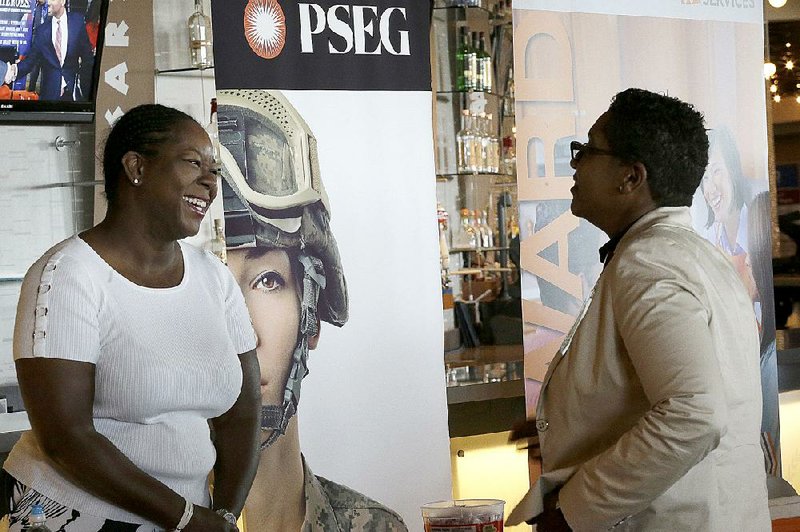WASHINGTON -- The U.S. labor market took one step forward and one back in June as job creation advanced while wages stagnated and the size of the labor force receded.
The unemployment rate fell to 5.3 percent, a seven-year low, the Labor Department said Thursday. But wages failed to budge, and other barometers of the job market painted a mixed picture.
The economy gained 223,000 jobs last month, and the unemployment rate fell from 5.5 percent in May. But the rate fell mainly because many people out of work gave up on their job searches and were no longer counted as unemployed, which may reflect rising discouragement.
The result is that the proportion of Americans working or looking for work fell to a 38-year low. The government doesn't count people as unemployed unless they're actively searching for work.
The government also said employers added 60,000 fewer jobs in April and May combined than it had previously estimated.
"The labor market is good, there's just not any wage pressure," said Joseph LaVorgna, chief U.S. economist at Deutsche Bank Securities Inc. in New York, who correctly projected the drop in unemployment. "The disappointment is on wages and on the participation rate."
The figures capture the persistently uneven nature of the job market's recovery from the recession. More people had begun looking for work in May, yet all those gains were reversed in June. And wages, which had shown signs of finally rising earlier this year, have now stalled. They have risen just 2 percent over the past 12 months, down from a 2.3 percent year-over-year gain in May.
The government data suggested that many employers may see no need to raise pay to attract or retain qualified workers and that there are more people available for work than the unemployment rate would otherwise indicate.
The Labor Department surveys employers for the week that includes the 12th of the month. That means the survey week last month ended on Saturday, June 13. Those getting paychecks bimonthly would normally not be paid until the 15th, which has tended to distort the wage readings when the survey week comes so early, economist Ted Wieseman of Morgan Stanley said in a research note.
"We've got to pick up the pace on wages," Labor Secretary Tom Perez said in a phone interview. "There's still significant slack."
The sluggish pay gains also raise doubts about when the Federal Reserve will raise interest rates and end a stimulus effort that dates to 2008.
Most economists have been predicting that the Fed would most likely raise rates in September. But last month's flat pay figure suggested to some that the Fed might delay that move.
"After this report, I think it would make sense to wait until December to start that slow rate increase," said Tara Sinclair, chief economist at the jobs site Indeed and a professor at George Washington University.
A Fed rate increase would lead to higher rates for mortgages, auto loans and other borrowing.
The jobs report said construction companies failed to add any jobs in June after hiring 15,000 in May and 30,000 in April. Manufacturing gained just 4,000 jobs in June. But health care added 53,000 positions, and retailers 33,000.
Still, over the past three months, hiring has averaged 221,000, a step up from 195,000 in the first three months of the year. That shows that some employers are confident that consumer demand for their goods and services will remain strong enough in coming months to justify more workers.
Their willingness to hire in anticipation of greater demand marks a shift from earlier in the economic recovery, when many businesses tended to hire only when essential.
A survey of purchasing executives at manufacturing firms released this week found that factories reported a scant rise in orders in June but ramped up hiring anyway.
Patrick Cimerola, senior vice president of human resources at Choice Hotels, said the company is raising pay and adding perks to hire workers in marketing, information technology and finance.
"More people are traveling, because more people have disposable income," Cimerola said. "And we believe that will continue."
The company, which franchises 5,500 hotels in the U.S. under the Quality Suites, Comfort Inn and other brand names, wants to add 50 employees to its technology center in Phoenix. It is seeking Java developers and other programmers to build its mobile reservation system and hotel management software.
Strong hiring has endured this year despite a miserable winter, which helped cause the economy to contract 0.2 percent at an annual rate in the January-March quarter.
Yet Americans are finally spending more after boosting their savings earlier this year, in part because they're growing more confident about the economy. The Conference Board said Tuesday that its consumer confidence index reached 101.4, matching March's figure for the second-highest level since the recession.
That's good news for auto dealers and real estate agents. Auto sales jumped to nearly a 10-year high in May. The National Automobile Dealers Association forecasts that sales will top 17 million this year for the first time since 2001.
And home sales are running at an eight-year high. Permits to build homes jumped 11.8 percent in May to the highest level since 2007.
Most economists now expect economic growth to reach an annual rate of 2.5 percent in the April-June quarter and 3 percent in the second half of the year.
Information for this article was contributed by Christopher S. Rugaber and Josh Boak of The Associated Press and by Shobhana Chandra and Kristy Scheuble of Bloomberg News.
Business on 07/03/2015
